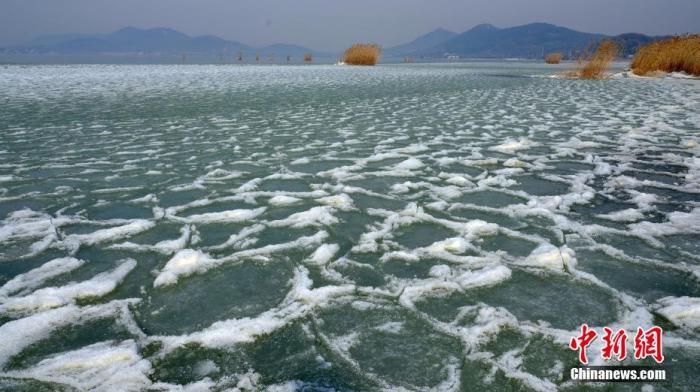China News Service, February 2nd. The Ministry of Emergency Management released on the 2nd the national natural disaster situation in January 2021. In January, my country's natural disasters were dominated by low temperature freezing and snow disasters. Droughts, forest fires, hailstorms and earthquakes also occurred.
A total of 1.669 million people were affected by various natural disasters.
Three people died and more than 1,000 houses were damaged. The area of crops affected was 117.1 thousand hectares, and the direct economic loss was 2.29 billion yuan.
The news pointed out that compared with the average of the same period in the past five years, the number of people affected by the disaster, the number of dead or missing due to the disaster, the number of damaged houses, and the direct economic loss decreased by 59%, 79%, 94%, and 60%, respectively.
Data map: On January 11, Suzhou, a large area of Taihu Lake freezes under the continuous low temperature.
Image source: Visual China
Low-temperature freezing disasters have a greater impact on southern regions
In January, there were three cold air processes affecting my country, namely 6-8 days, 14-17 days, and 24-27 days. The first two processes had a large temperature drop and a wide range of effects. The third time mainly affected the northern region.
In terms of impact, although the northern region has suffered severe cooling effects, it has little impact on winter wheat.
The extreme cold air brought about the strong wind cooling and rain and snow that have adversely affected municipal pipelines, transmission lines, transportation, and heating and power supply in Inner Mongolia, Jilin, Liaoning and other places. As relevant places attach great importance to response work and take disaster prevention in advance, Did not cause major disaster losses.
In the south, cash crops such as navel oranges, pineapples, and rapeseeds are weak in frost resistance, and agricultural losses are relatively large.
In general, compared with the average of the same period in the past five years, January’s low-temperature freezing and snow disasters were lighter, and the affected area of crops and direct economic losses decreased by 76% and 61% respectively.
The local drought in Jiangnan, South China and Southwest China is beginning to appear and continues to develop
Since the end of 2020, the rainfall in the south of the Yangtze River, most of South China, and southwestern my country has been 40% to 70% less than normal in the same period, and the distribution of rainfall is very uneven.
Among them, droughts in Guangxi, Hunan, Yunnan and other provinces (regions) have first appeared, and local people and animals have difficulty drinking water.
The water storage capacity of reservoirs in Zhejiang and Guangdong provinces was 10-20% less than that of the same period in normal years. The water levels of some small and medium-sized reservoirs were close to or below the dead water level, and water supply shortages occurred in some cities, counties and towns.
It is currently in winter, and the crop area in the field is small and the water demand is small. Agricultural drought is lighter than meteorological drought and hydrological drought.
In general, the country’s drought was significantly lighter than normal. Drought disasters caused 10.9 thousand hectares of crops in Guangxi, Hunan and other places to be damaged, with direct economic losses of 175 million yuan.
Forest fires occur frequently in parts of the south
According to preliminary statistics, there were 118 forest fires nationwide in January, with 3 deaths; 1 grassland fire and 3 grassland fires with no casualties.
In general, since the end of last year, some southern provinces have had less precipitation. In addition, the continuous cold wave and freezing weather in January caused the forest vegetation to dry up and fall, and the combustible materials in the forest increased sharply. The rural autumn harvest and winter planting activities used more agricultural fires. This leads to a higher level of forest fire risk.
Local areas in Northwest and Southwest are affected by wind and hail disasters
In January, due to strong winds, hail disasters occurred in Xinjiang, Qinghai and other places in the northwest of my country, Tibet, Yunnan and other places in the southwest of China. The high winds damaged some rural residential houses and agricultural greenhouses.
Earthquake geological disasters are low in occurrence and losses are small
In January, there were no earthquakes of magnitude 5.0 or higher in mainland China, and the seismic activity level was obviously weak.
There were 5 earthquakes of magnitude 4.0 or higher, the highest magnitude being the magnitude 4.7 earthquake in Yanjin, Yunnan on January 23, causing minor injuries to 4 people and cracks in some old houses.
In addition, affected by factors such as low rainfall, the national geological disasters are relatively light, with small collapses, landslides and other geological disasters occurring in local mountainous areas such as Qinghai, Chongqing, and Sichuan.

